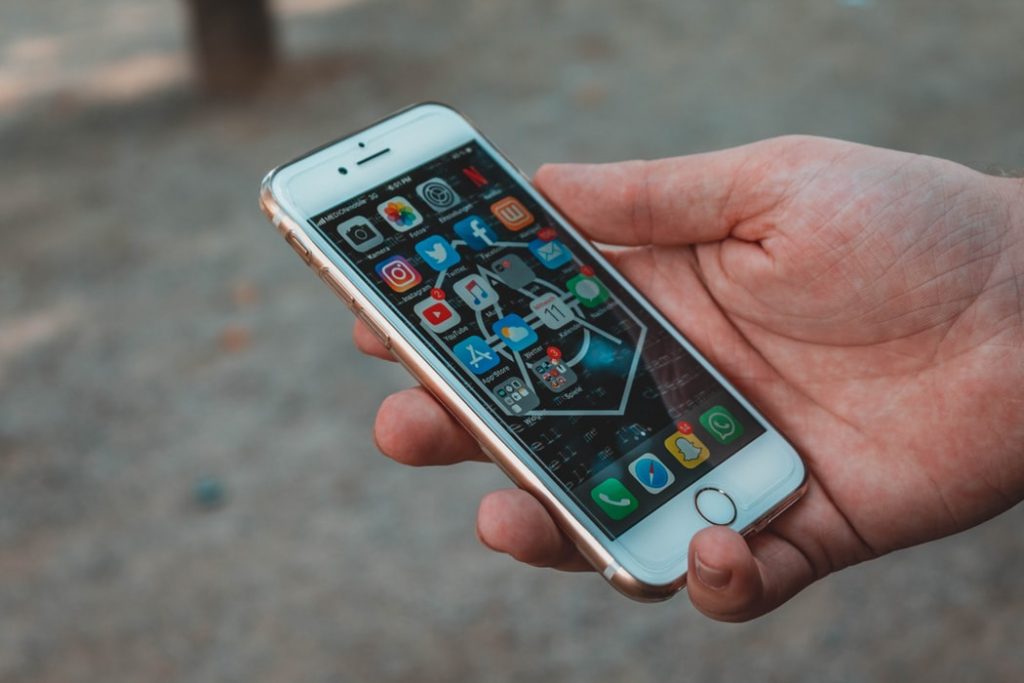It’s safe to say that Apple has captured hearts and wallets around the world as few other technology brands can. With a wide range of exclusive products that are often seen as representatives of class and sophistication, Steve Jobs did the job (of capturing the market) quite effectively with his brand. However, with a new release every year, it can get hard to keep track of the company’s latest offering or how it differs from previous offerings. Well, that’s why we’re here — to help clear out the aura of confusion that surrounds these more-exclusive-than-Knox-and-Vivienne-Jolie-Pitt’s-baby-photos gadgets!
To pit the iPhone 6S against the 7 would be another Obi-wan Kenobi and Anakin Skywalker showdown. So what’s the difference between the Iphone 6s and 7? The latter was expected to comfortably conquer the market; however, given the fact that the two models look about as different from each other as the Sprouse twins do, iPhone lovers the world over were left wondering whether to upgrade to the iPhone 7 or take advantage of the price drop and choose its now-more-affordable older cousin. Today, we break it down for you and tell you what exactly the differences between the two are. iLetsMove!

iPhone 6s Vs. 7: Outward Appearances
Don’t judge these books by their cover because there’s virtually no difference in the outward appearances of the two models — except for the headphone jack. Where the 6S can support standard earphones and aux cables, the 7 requires you to either sell a kidney and buy AirPods (or wireless headphones, at the least) or use their specialized and very-easy-to-lose-and-expensive-to-replace “lightning to 3.5 mm headphone jack adaptor” cable (included with the 7) to connect your normal earphones to the phone. Though the latter is the much, much cheaper option, the catch is that you won’t be able to charge your phone and listen to music at the same time unless you happen to sell your other kidney and get a wireless charger (alright, maybe not a kidney, but a substantial amount nonetheless). However, be aware that the wireless charging option doesn’t come in-built with the 7 and you’ll have to resort to external software and hardware to enable the same.
Additionally, there is almost no change in the dimensions of the 7 from the 6S, just as it has been for the previous three generations of iPhones. Both the phones share the exact same 138.3 x 67.1 x 7.1 mm measurements; the only difference is that the 7 weighs 143 g while the 6S weighs in at 138 g. Also, though both have the Series 7000 aluminum coating that makes them highly durable, Apple does one better with the iPhone 7 by adding IP67 water and dust-resistant coating that lets the phone go through 30 minutes of submersion in water and survive like Sandra Diaz-Twine.
There is also a small change in the home button, which is a fixed touch-sensitive haptic-feedback-enabled surface in the 7, reducing the highly common occurrence of button failures and allowing app developers access to custom haptic feedback patterns. Apple has also done away with the antenna bands on the iPhone 7, resulting in a much more dapper look. They’ve also integrated a speaker into the earpiece, enabling the debut of louder external audio. Lastly, the iPhone 7 comes in Rose Gold, Gold, Silver, Black and Jet Black (only for 128 GB and 256 GB) options, as opposed to the Rose Gold, Gold, Silver and Space Gray options that the 6S offers.
Changes in the Display: iPhone 6s and iPhone 7

Apple revolutionized display screens across the world when it introduced its “Retina Display” feature way back in 2010 with the iPhone 4. There’s been no looking back for the tech giant since, with the incorporation of 1080p, 2K and 4K OLED displays into their phone models. Not surprising, then, that both the iPhone 7 and 6 have 4.7-inch LED-backlit IPS LCD screens that are capable of displaying 1334 x 750 pixels and have a 65.6% screen-to-body ratio. The only difference is that peak brightness in the 7’s “cinema standard display” has been boosted by 25%, which means better support and management of a wider spectrum of colors. Both models retain their 3D Touch support feature.
iPhone 6s and 7 Difference: Performance Specifications

This is the area where the most major changes kick in. Just when one thought that it wasn’t possible to get any faster than the 6S, 2016’s fastest-performing phone, Apple raised the bar and improved upon perfection, resulting in a much faster-performing iPhone 7 model.
To enable its killer speed, the 7 is equipped with Apple’s A10 Fusion chipset (iOS 10), quad-core CPU, six-core GPU and 2GB RAM, whereas the 6S is equipped with an A9 (iOS 9) chipset, dual-core 1.84GHz Twister CPU, PowerVR GT7600 GPU and 2GB RAM. With this impressive hardware to back it up, the 7 is expected to outperform the 6S’ speed by as much as 40-50%! The phone can also boost 4G speeds by the same percentage (provided you switch out your 300-Mbit modem for 450).
That being said, the 6S is still a super-fast phone, with not many users missing the upgrades that come in the newer model.
Camera Features of iPhone 6s and 7

Probably the most important factor that the average user looks for in a phone (where would we be without those social-media-worthy selfies, right?), the iPhone 7 comes with an impressive array of camera features that can satisfy any photographer, amateur or professional.
iPhone 7 manages to give the current reigning king of smartphone photography, Samsung, a super-fast-paced-walk (if not a run) for its money with its impressive rear camera that boasts a 12-megapixel rear sensor, f/1.8 aperture speed, optical image stabilization and Focus Pixels features, quad-LED dual-tone flash and 4K video-recording quality, and a front camera that comes equipped with a 7-megapixel sensor, f/2.2 aperture speed, and 1080p recording. For reference, the 6S lacked optical image stabilization (it had Software Image Stabilization instead) and came with a 5-megapixel front camera that only managed to churn out 720p video recording quality. The 7 also uses a new 6-element lens as compared to the 6S 5-element lens, enabling the faster aperture speed the former boasts. All of the 7’s camera features also manage to improve on previous models’ huge weakness — low-light photography.
It is also noteworthy that the iPhone 7 comes with an upgraded image signal processor and like the display, can support a wider color spectrum and boost color accuracy better than the 6S. Deservingly though, despite their bulkiness, the 7’s dual rear cameras take the spotlight, providing 2 times better optical zoom and a depth-of-field much wider and better than the 6S.
iPhone 6s Vs. iPhone 7: Battery Life

(That’s what she said; sorry, not sorry!). Either way, we’re talking about battery life and storage and how long you can go with both; either before charging or backing up to your PC. The 7 manages to clinch this victory, but only by a slight margin of an hour or so. Many users still find it frustrating that Apple hasn’t equipped its phones with wireless charging or turbo-charging, especially considering the fact that rival companies have had these on their models for years now.
Coming to the storage ability, Apple managed to impress users with its 32-256 GB storage space options, making the 7 put its money where its mouth is. The company does away with the 16/64/128 combination and instead offers 32GB ($649), 128 GB ($749) and 256 GB ($849). The 6S only offers 32 GB and 128 GB options.
Differences between iPhone 6s and 7: Which One Should You Consider?
Despite their many similarities, the iPhone 7 is still an upgrade from the 6S. After all, no company would risk selling old wine in a new bottle, or start a whole new range when there’s a difference of only one ingredient, with today’s economy in play. Apple manages to keep a firm grip on the market with the iPhone 7’s water resistance, new and improved camera features, and better display, performance, storage, and durability, all of which are highly welcome changes.
Having said that, the upgrades aren’t necessarily so appealing or essential that you should throw away your 6S immediately or trade it in for its younger brother. The lack of a headphone jack, identical design and the fact that there is still no in-built wireless charging option can give users ample reason to pause and give this good thought. After all, money doesn’t grow on most of our trees. Therefore, don’t give in to the pressure of appearances and slick marketing; carefully weigh the two models before you reach a decision, especially if you already own a 6S; even if you’re looking to switch from another phone to an Apple phone, getting a 6S is wiser due to the drop in its price as a result of the 7’s release.
The 7 may not be remembered as Apple’s best model; however, its upgrades are noteworthy. The 6S is beaten by the 7 in many aspects; however, it isn’t that different from the 7 in terms of performance, speed, looks, and features. Therefore, no clear winner emerges in this clash of the titans, but we can safely say you won’t regret getting either model!






